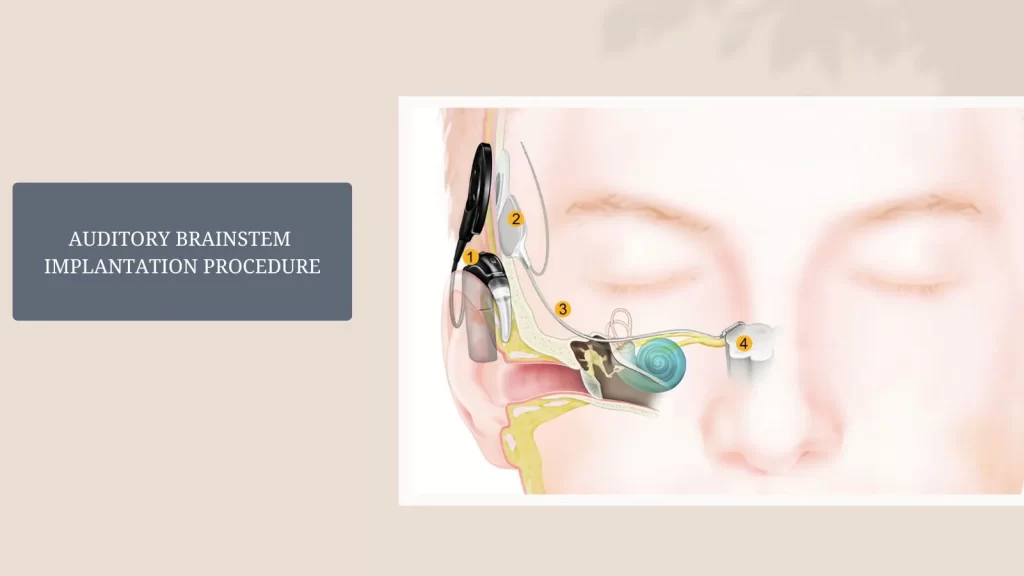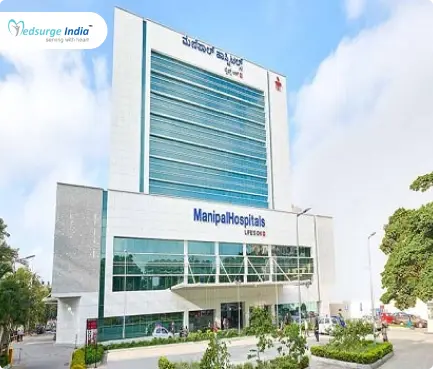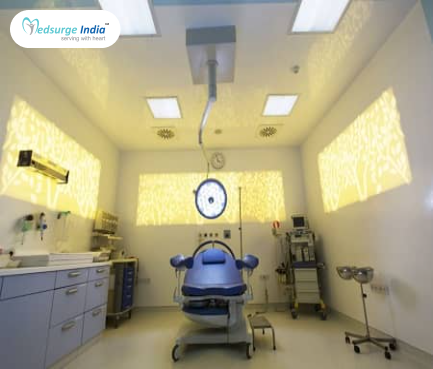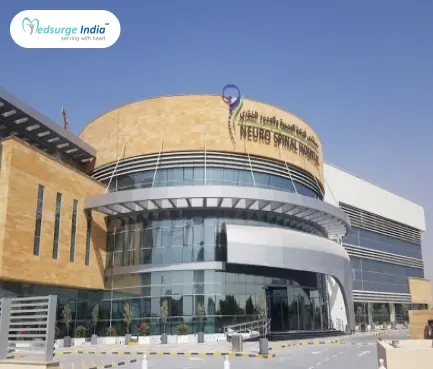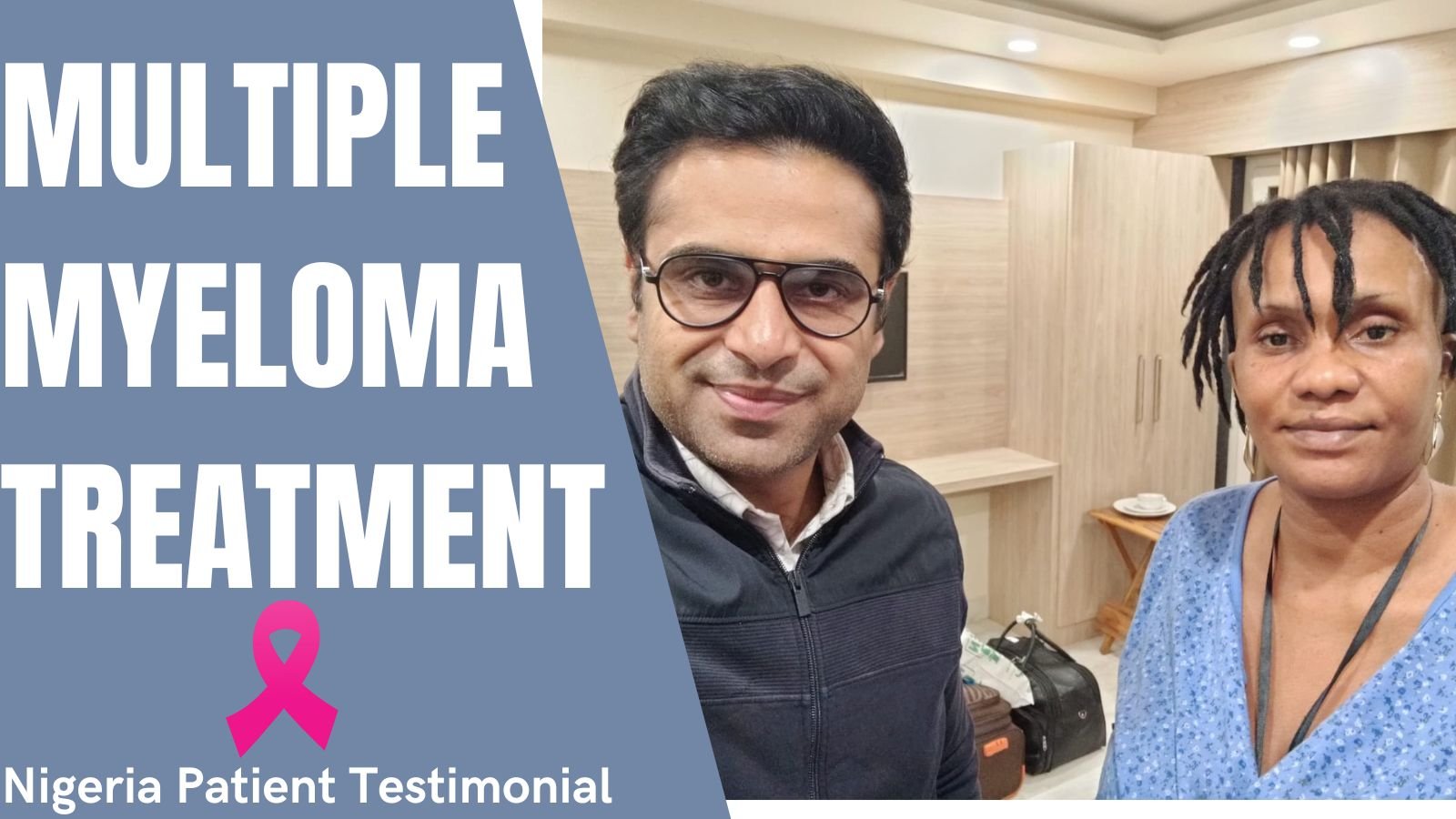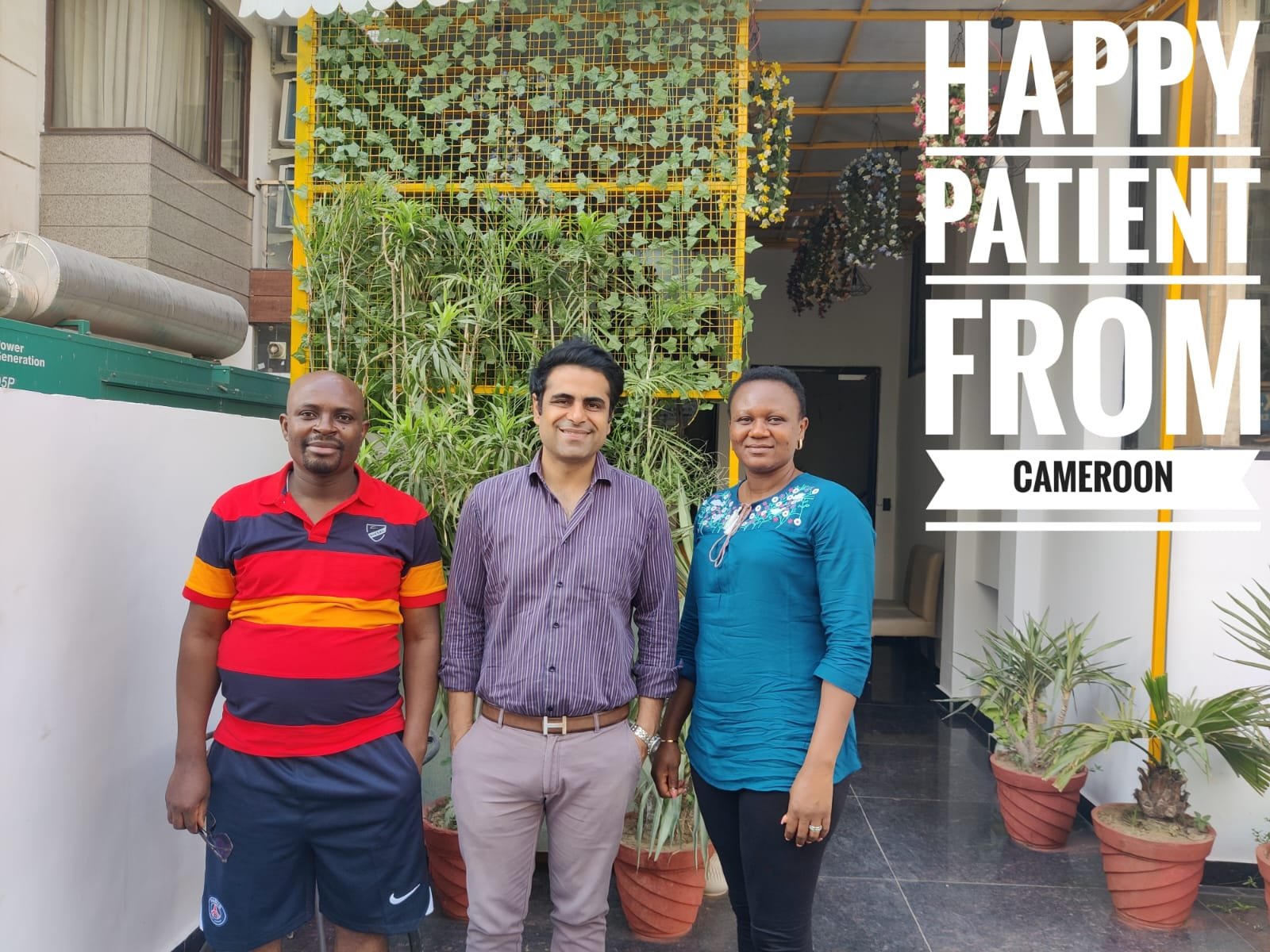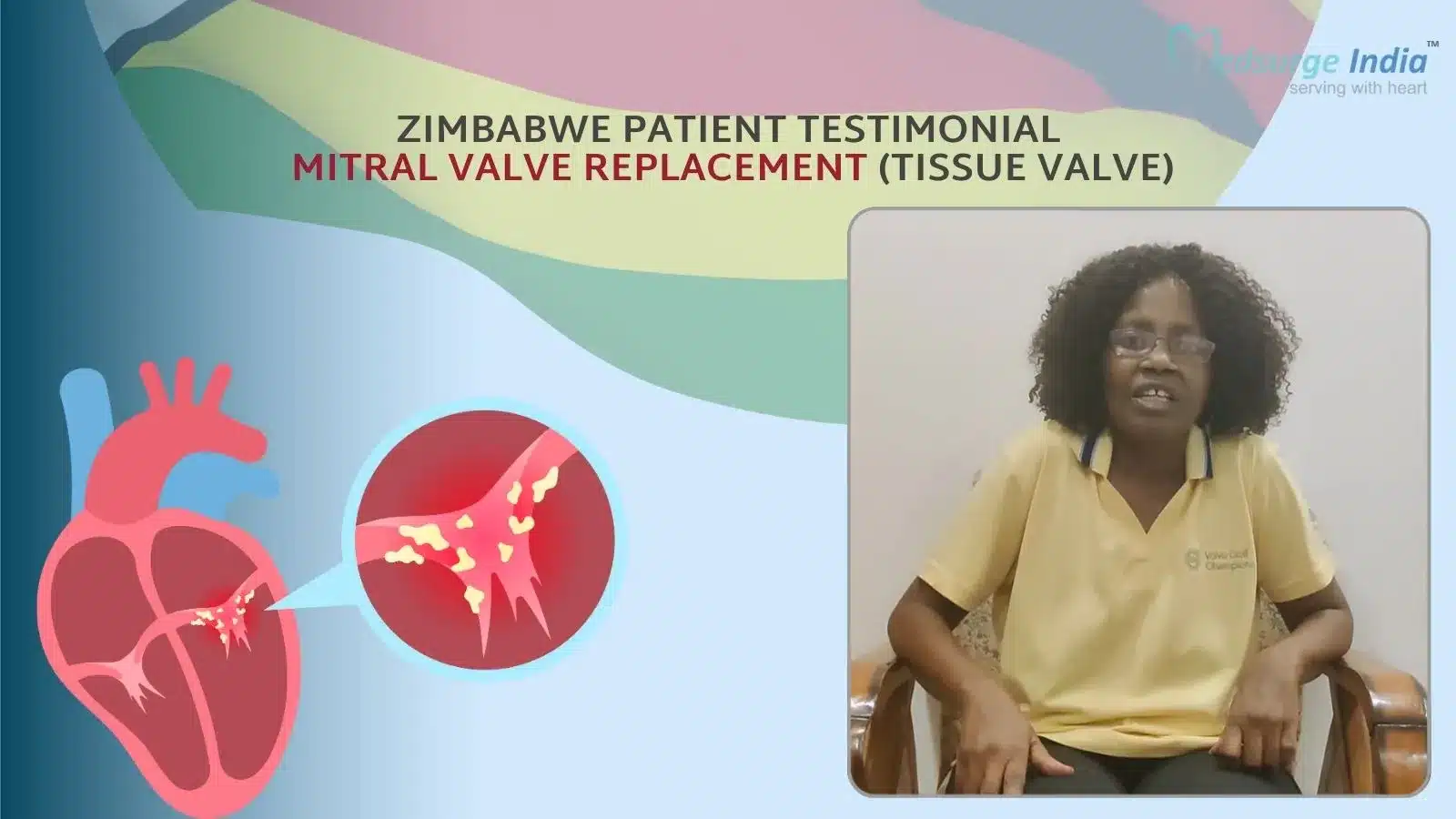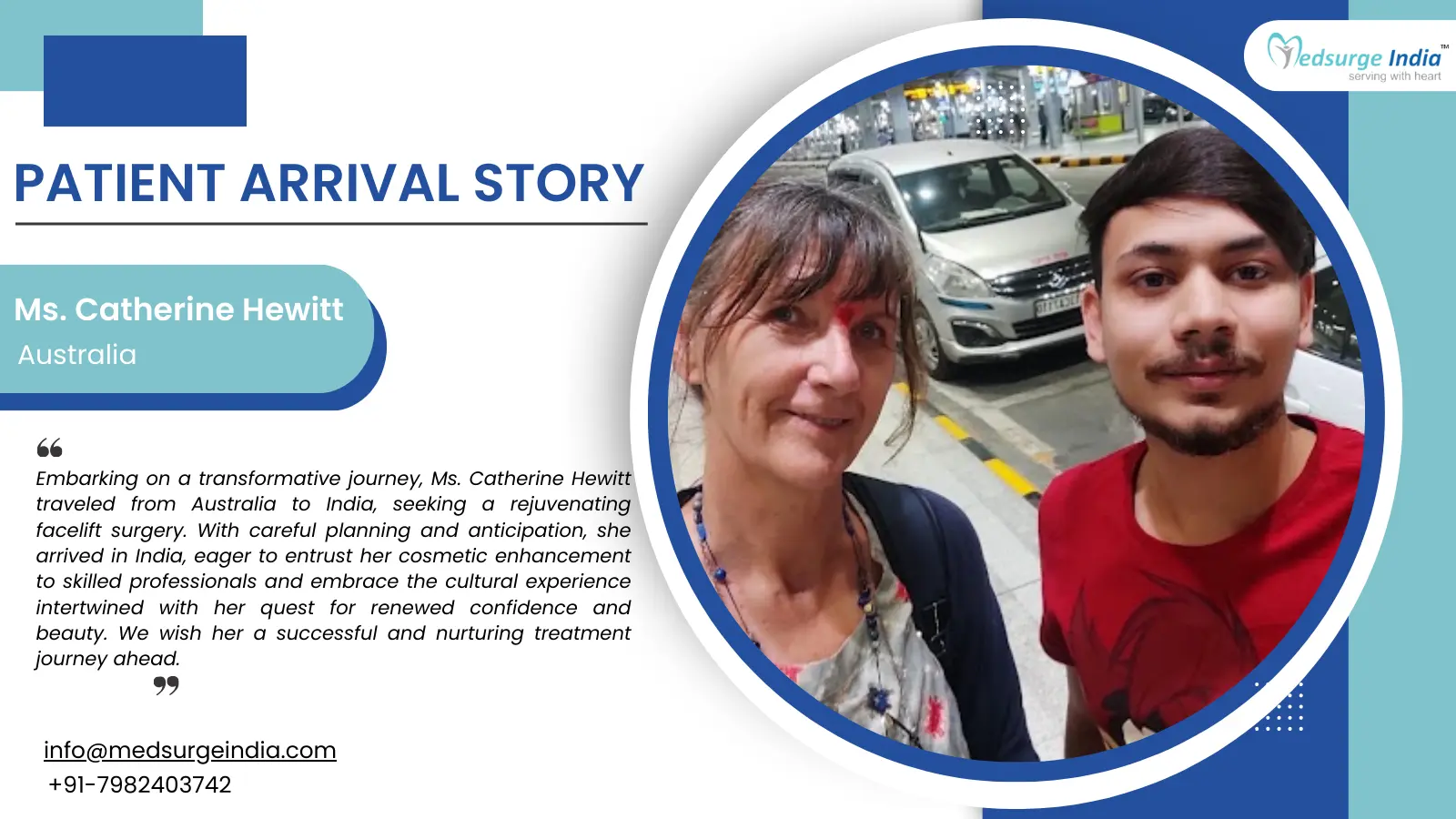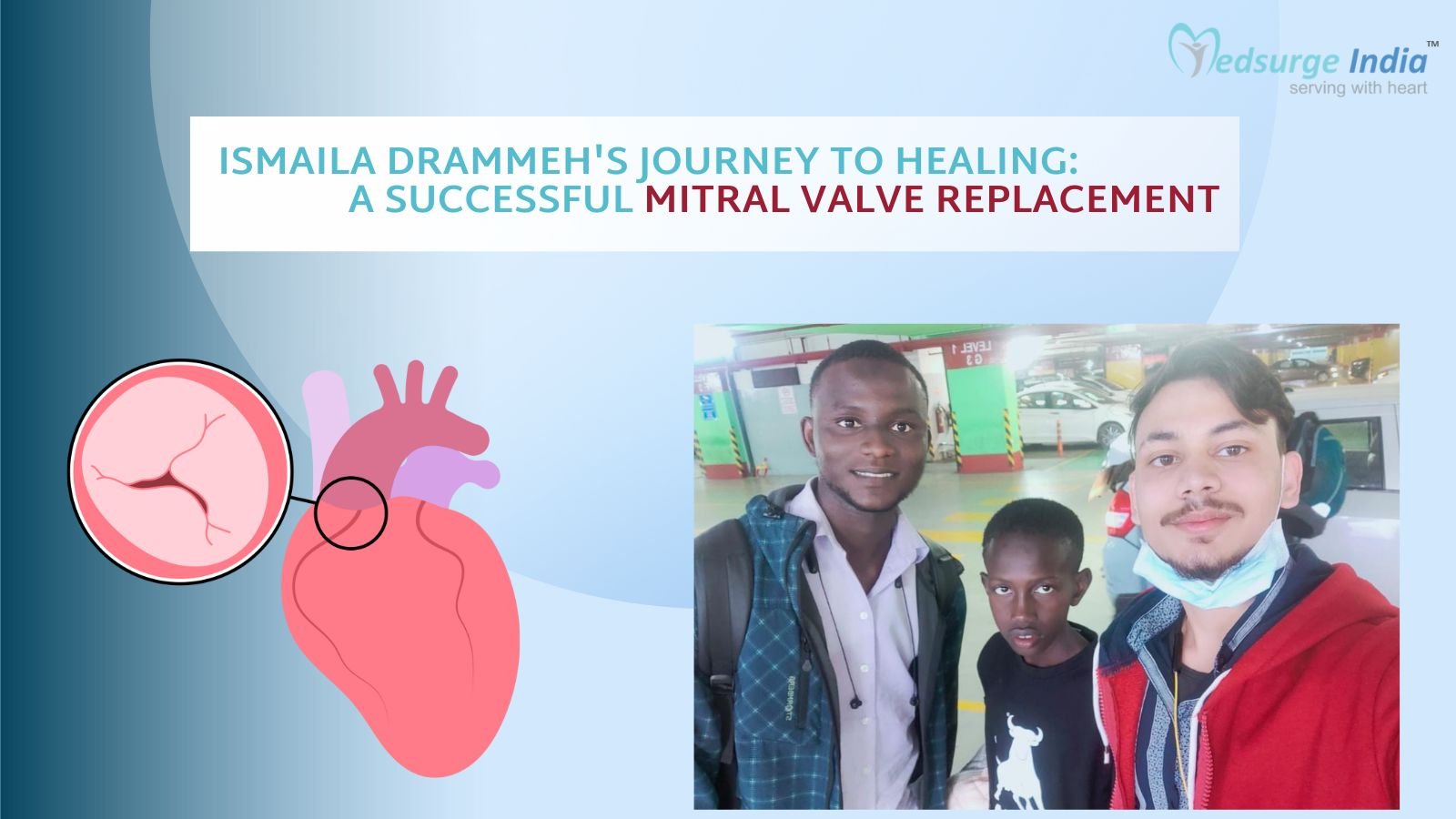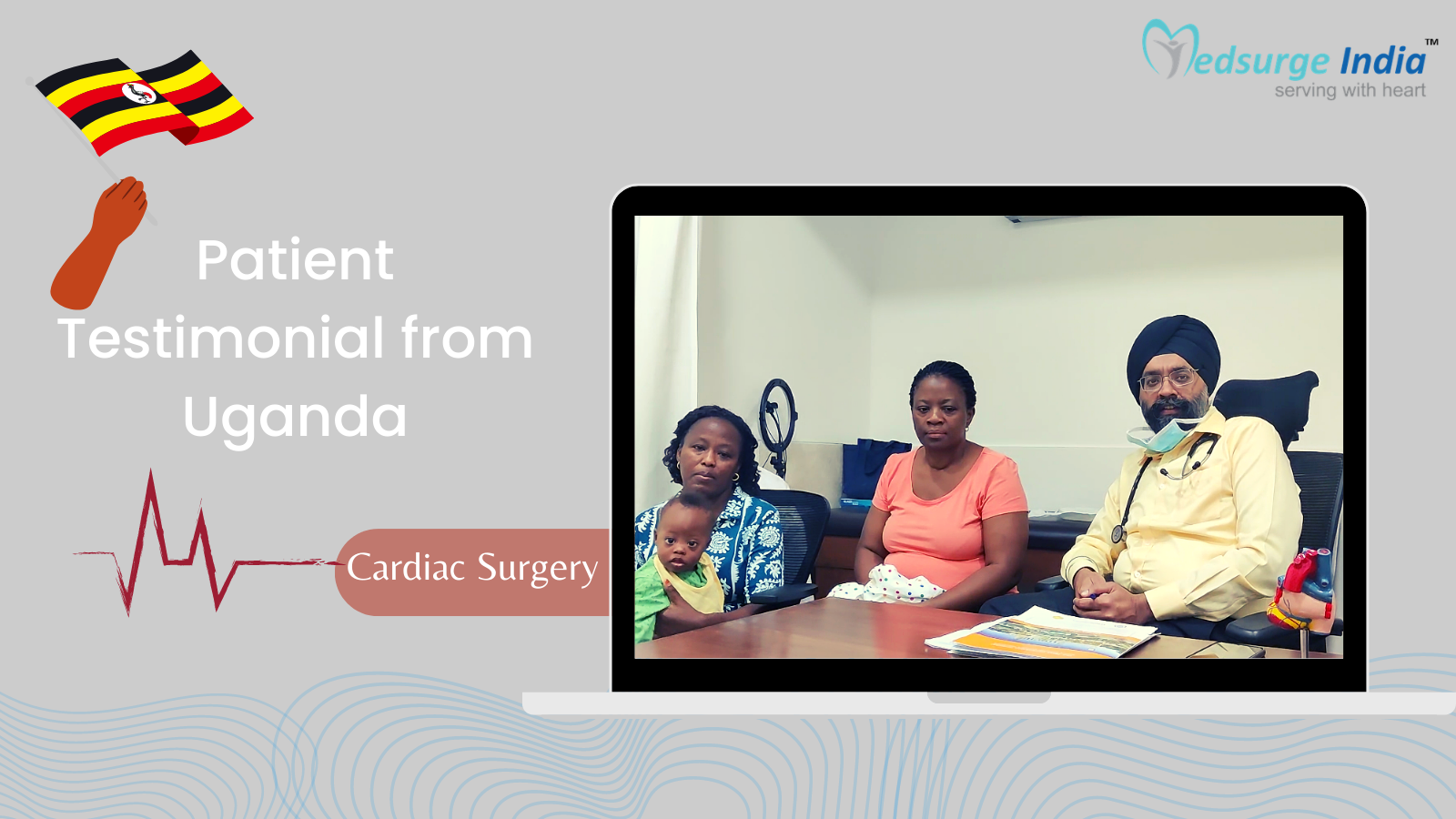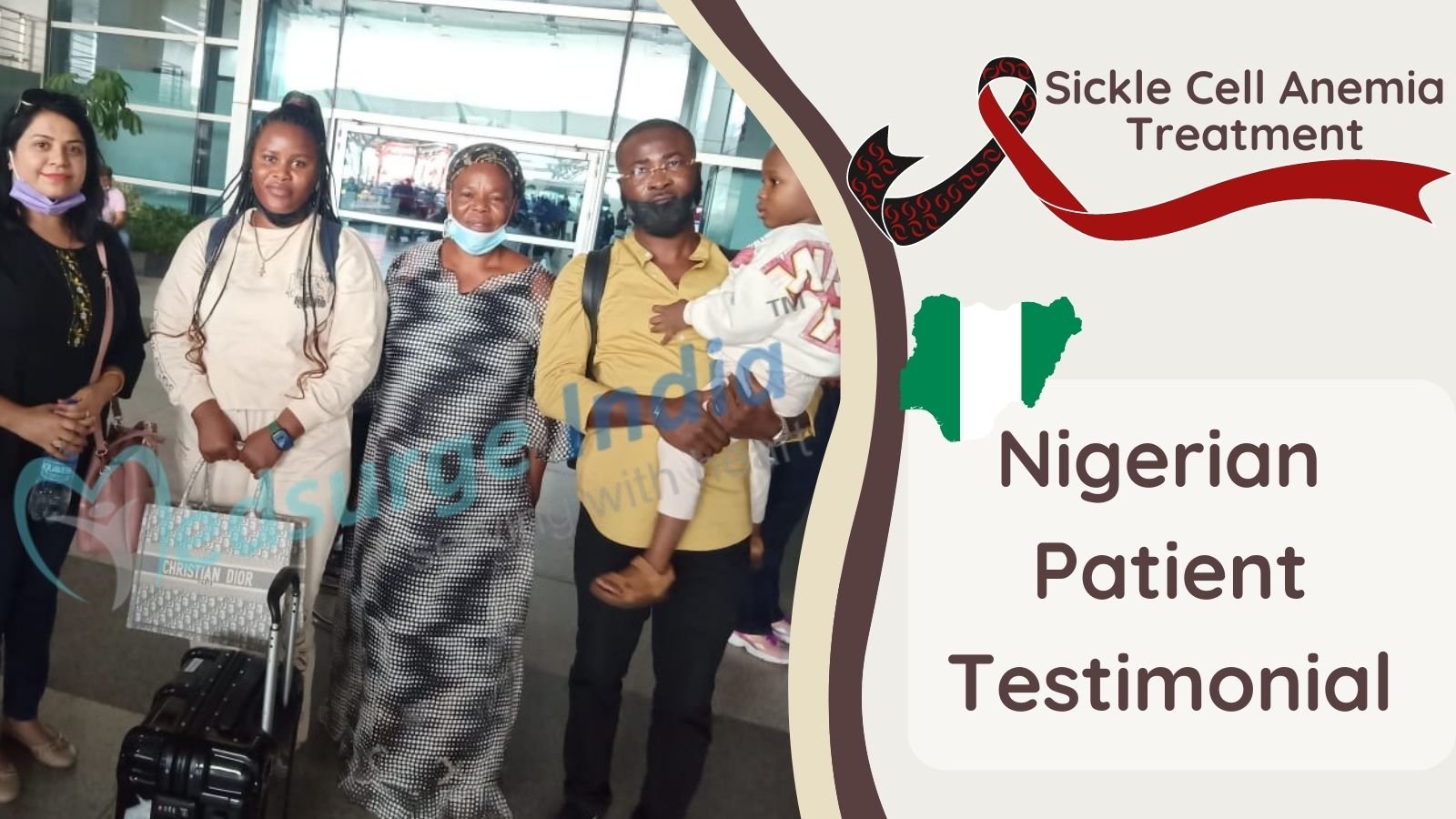
In people without a working auditory nerve, an Auditory Brainstem Implant (or ABI) restores some hearing. Usually, this type of hearing loss occurs in infants with inner ear abnormalities or an inherited condition known as Neurofibromatosis Type 2 (or Nf2 for short).
People with neurofibromatosis type 2 (NF2) who have non-cancerous tumors on their auditory nerve are the most likely candidates for the Auditory Brainstem Implant in India. People with structural variations in the inner ear may potentially benefit from the ABI.
The total cost of Auditory Brainstem Implant in India is quite affordable as compared to other developed countries like the United States and the United Kingdom. However, the exact cost is likely to vary depending on a variety of factors such as the location you live in, consultation fees with your doctor, preoperative testing, and the facility of your choosing.
What Is an Auditory Brainstem Implant
An Auditory Brainstem Implant in India is a device that delivers a sense of sound to individuals who have substantial hearing loss due to a missing or non-functioning cochlea (inner ear) or hearing nerve. People can achieve more:
- Sound perception
- The capacity to read lips
Sound recognition is sometimes combined with word and sentence recognition. The auditory brainstem implant stimulates the brainstem’s hearing circuitry directly, bypassing the inner ear and hearing nerve.
The auditory brainstem implant was developed initially for individuals (adults) with neurofibromatosis type 2 – a rare genetic disorder in which tumors grow on nerves. Adults and children with various nerve and inner ear disorders are now being considered for surgery.
The surgery’s objective is to restore hearing in persons who have lost it. People who are unable to receive a cochlear implant may benefit from an Auditory Brainstem Implant in India. A cochlear implant is an electronic device that directly stimulates the hearing (auditory) nerve by bypassing damaged or nonworking components of the inner ear (cochlea). A cochlear implant delivers superior sound quality in general, however it cannot be used in all settings.
Who Is a Good Candidate for Auditory Brainstem Implant in India
If you have profound hearing loss due to a non-functioning or absent cochlea (inner ear) or auditory (hearing) nerve, you may be a Good Candidate for an Auditory Brainstem Implant in India.
ABI was originally developed for persons with neurofibromatosis 2 (NF2), a rare hereditary condition. Acoustic neuromas, which grow along the auditory nerve in NF2, are tumors. Both the tumors and the treatment for them can permanently harm your auditory nerve. People frequently develop deafness in both ears. In certain cases, hearing aids or cochlear implants cannot restore hearing.
People with NF2 were the first to be implanted with an ABI. Since then, these implants have assisted other people who have substantial hearing loss due to non-functioning or missing hearing nerves or inner ears. ABI can help infants, children, and adults, especially individuals who:
- Are born without a functional auditory nerve (aplasia) or with an auditory nerve that has not matured properly (hypoplasia).
- Are deaf as a result of an abnormally shaped inner ear (cochlea), inadequate inner ear development (cochlear hypoplasia), missing inner ear structures (cochlea aplasia), bone overgrowth (cochlear otosclerosis), or inappropriate bone development (cochlear ossification).
- Have injured or severed an auditory nerve, possibly as a result of temporal bone (the part of the skull above the ear) fractures on both sides of their head.
- Have additional causes of deafness that cannot be improved by a hearing aid or cochlear implant.
What Does Auditory Brainstem Implant Look Like
The implant is divided into two parts:
- Processor: This is the portion that you wear on top of your ear or on the side of your head. A microphone in the CPU collects up on ambient sounds. It converts the sounds into an electrical signal and sends it to the implant. While you sleep, you remove the processor.
- Internal implantation: A surgeon inserts this component, which includes:
- Receiver-stimulator: an electrode paddle placed beneath your skin on the side of your head.
- Electrode paddle: implanted on the cochlear nucleus complex, the hearing component of the brainstem surface.
Auditory Brainstem Implant Cost In India
Affordable Auditory Brainstem Implant Cost in India starts from INR 3,91,000 (USD 4,700). The entire treatment cost plan may vary depending on the type of hospital and city picked by the patient. Also, the Cost of an Auditory Brainstem Implant in India can vary depending on a number of criteria, such as:
- The package of Auditory Brainstem Implant in India can depend on the hospital’s preference.
- Doctor’s competence and experience in the subject.
- The patient’s situation: The patient’s disease and whether additional modalities are required for comprehensive treatment.
- Duration of hospitalization and stay for an auditory Brainstem Implant in India.
- Need for post-operative care.
- Auditory Brainstem Implant prices can depend on the type of hospital and rooms you stay.
Get Free Cost Estimation
Procedure
How Auditory Brainstem Implantation Procedure is Performed
Before the Procedure
- Behavioral testing: Audiologists will assess your hearing ability both with and without hearing aids.
- Evaluation of communication skills: A speech-language pathologist may evaluate your language development and communication style.
- Electrophysiologic testing: Audiologists will use this testing to determine the extent and location of hearing loss.
- Imaging studies: A CT scan and an MRI may be performed to check your cochlea, auditory nerve, and surrounding structures.
- History: Your medical history and hearing loss will be discussed with your healthcare professional.
- Neuropsychological testing: Your provider will assess your brain function and capacity.
During the Procedure
The implantation surgery requires the joint effort of a highly skilled surgical team. The team usually consists of a(n):
- Neurosurgeon
- Anesthesiologist
- Neurololgist
- Electrophysiologist and audiologist
Auditory brainstem implants are composed of three major components:
- To take up noises, a microphone and sound processor are placed behind the ear.
- A decoder chip implanted beneath the skin to transfer data picked up by the microphone
- Electrodes that are directly attached to the brainstem and, when activated, alert you to sound
If you have neurofibromatosis type 2, the surgery is usually done at the same time as tumors on the hearing (auditory) nerves are removed.
After the Procedure
You’ll most likely be in the hospital for two to four days following surgery. Depending on the exact condition and type of surgery, the hospital stay could be extended. During surgery, the medical team programmes the device, which is activated a few weeks later.
You’ll need several sessions with an audiologist after surgery to tweak the sound processor and learn how to use and interpret the signals. This procedure can take several months. You should see an audiologist every two to four months for the first year, and then once a year after that.
What Are the Benefits of Auditory Brainstem Implantation
Although an ABI cannot restore normal hearing, it can increase sound awareness, identification, and lip-reading skills. The outcomes vary greatly.
When compared to people with NF2 who have had a long time of deafness, children who obtain an ABI at a young age (after a short term of deafness) show better word understanding.
In addition to the time of profound deafness, other factors that can influence results include involvement in hearing rehabilitation after surgery, the size and location of the tumor, and other medical concerns.
Discuss the risks and advantages with your healthcare physician. You can make an informed decision about your health if you work together. Discuss the risks and advantages with your healthcare physician. You can make an informed decision about your health if you work together.
What Are the Risks Associated with the Auditory Brainstem Implantation
Meningitis, fluid leaks in the brain and spine, facial nerve weakening, pain, and dizziness are all possible risks following auditory brainstem implants. Despite proper device placement, some people do not benefit from hearing aids.
Although, the complication rate for ABI surgery is low, especially if your surgery is performed by a competent team.
Your surgical team will go over any potential issues and how to treat or manage them. Among the complications are:
- Implant failure (when the device fails to provide useful auditory sensations or when the electrodes shift out of place).
- Non-auditory stimulation (occurs when the device induces pain in structures other than the hearing centers).
- Tumor removal remains incomplete.
- Palsy of the facial nerve (nerve injury resulting in loss of facial mobility).
- Infection on the wound.
Contact the doctor who treated you if you experience a fever or pain following ABI surgery. To avoid difficulties, your team will closely follow you after surgery. You’ll also need to see an audiologist following the procedure to adjust the device’s programming.
Conclusion
People who have hearing loss due to a damaged or non-functioning auditory nerve may benefit from an auditory brainstem implant. It bypasses the inner ear by sending a signal from an outside sound receiver directly to their brainstem. It can help with sound perception. To get the most out of an ABI, it’s ideal to follow it up with speech therapy.
Reference Links:
The Most Important Frequently Asked Questions
Q: What Is the Difference Between Cochlear Implant and Auditory Brainstem Implant?
A: The technology is similar to that used in cochlear implants. The electrodes in the cochlear implant, on the other hand, stimulate your auditory nerve. An ABI stimulates your brain stem by bypassing your auditory nerve.
Q: What Are the Drawbacks of the Auditory Brainstem Response?
A: The following applications are disadvantages of brainstem audiometry hearing aid selection: In cases of severe hearing impairment, including no or only weak information about loudness perception. There is no control over the compression setting. There is no frequency-specific correction for hearing loss.
Q: What Happens If the ABR Test Fails?
A: If your infant fails the hearing screening, make an appointment for additional testing as soon as possible. If your infant has hearing loss, having them evaluated and treated as soon as possible will most likely result in better outcomes for your baby. At their follow-up appointment at CHOP, your infant will be tested for ABR and OAE.
Q: How Is ABR Testing Performed?
A: An audiologist inserts miniature earphones and soft electrodes (little sensor stickers) near the child’s ears and on the forehead. Electrodes evaluate how the hearing nerves and brain respond to clicking sounds and tones transmitted through the earphones.
Q: Is ABR Capable of Detecting Tumors?
A: One of the most intriguing discoveries about the ABR was that it could detect vestibular schwannomas. These tumors often grow from the vestibular section of the eighth nerve, but because they commonly induce hearing loss, they are referred to as “acoustic” tumors.
Top Hospitals for Auditory Brainstem Implant in India
Top Doctors for ENT Surgery
Dr. EC Vinaya Kumar
Consultant
Experience: 33 years of experience
Apollo Hospitals, Jubilee Hills Hyderabad
Hyderabad, India
Dr. Amol Patil
Consultant
Experience: 14 years of experience
Nanavati Super Specialty Hospital Mumbai
Mumbai, India
Dr. Suryanarayan
Consultant
Experience: 32 years of experience
Fortis Hiranandani Hospital, Vashi
Mumbai, India
Dr. Shomeshwar Singh
Senior Consultant , MBBS, MS, FRCS
Experience: 24 years of experience
BLK Super Speciality Hospital, New Delhi
New Delhi, India
Dr. Smitha T M
Senior Consultant
Experience: 10+ years of experience
Sahyadri Narayana Multispeciality Hospital, Harakere, Shimoga
Shimoga, India
Dr. Baljeet Singh Khanduja
Senior Consultant
Experience: 13 years of experience
Fortis Escorts Hospital Jaipur
Jaipur, India
Dr. Orpha Kalel
Visiting Consultant
Experience: 13 years of experience
Fortis Hiranandani Hospital, Vashi
Mumbai, India
Dr. Shalina Ray
Consultant
Experience: 43 years of experience
Manipal Hospital (Old Airport Road) Bangalore
Bangalore, India
Dr. Sanjeev Chawla
Senior Consultant
Experience: 10 years of experience
Kailash Hospital and Heart Institute, Noida
Noida, India
Dr. Avinash Borade
Consultant
Experience: 10 years of experience
Fortis Hiranandani Hospital, Vashi
Mumbai, India
Dr. Chandreyi Banerjee
Consultant
Experience: 35 years of experience
Ruby General Hospital, Kolkata
Kolkata, India
Dr. Rajasekharam.N
Consultant
Experience: 14 years of experience
Aster Prime Hospital, Hyderabad
Hyderabad, India
Dr. Narendranath A
Consultant
Experience: 10 years of experience
Fortis Hospital, Bangalore (Bannerghatta Road)
Bangalore, India
Dr. Manjunath MK
Consultant
Experience: 15 years of experience
SS SPARSH Hospital (Mysore Road) Bangalore
Bangalore, India
Dr. P S Reddy
Consultant
Experience: 41 years of experience
Apollo Hospitals, Greams Road, Chennai
Chennai, India
Dr. Alakananda Debnath
Senior Consultant
Experience: 17+ years of experience
Narayana Multispeciality Hospital, Barasat, Kolkata
Kolkata, India
Dr. Anil Thukral
Director
Experience: 35 years of experience
Marengo Asia Hospitals, Faridabad
Faridabad, India

